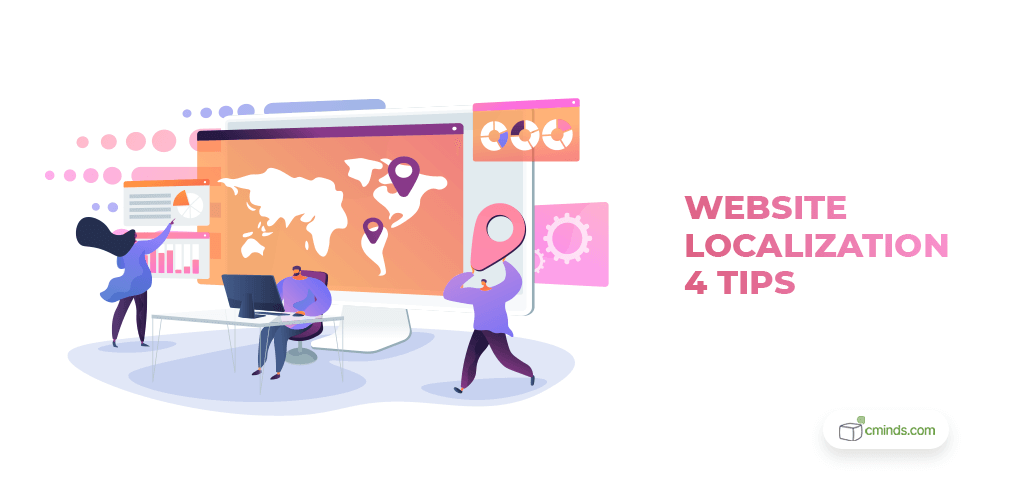Localization can have big benefits for your business. These website localization tips will make your localization journey smooth sailing.

What is Website Localization?

Put simply, localization is the process of adapting your website for a local language and culture. Localization creates a personalised experience for customers based on their location.
Localization is great way to expand your customer base across the globe, making your site more accessible for international audiences in your chosen market.
April 2025 Offer – For a Limited Time Only:
Get WordPress Tooltip Glossary Plugin for 15% off! Don’t miss out!
However, before you embark on your localization journey, it’s important to know more about the process.
While, on the surface, localization might seem synonymous with translation, there are actually a number of different elements to the process. These include:
- Language – Language is a key component of localization. If you translate your website, you need to ensure that your brand voice comes through in every language.
- Cultural Differences – You will also need to take into account cultural differences. This should inform both your content and how it’s presented. Things like dates and time or holidays and celebrations should be accurately represented.
- Navigation – Localization should also extend to your website navigation. Users should be able to quickly and easily select their preferred language for easy browsing.
While translation and language are a key component, it’s not the only focus of a localization project.
With so much to think about, we know that website localization might seem like a daunting task. But, we assure you that the benefits are well worth the work.
Plus, we’ve got some top website localization tips that will help you get the most out of your project.
Website Localization Tips to Get Ahead

Keep these website localization tips in mind as you carry out your project.
1. Conduct Market Research
First things first, before you start localizing – you need to know your market.
Thoroughly research the country, region, or city you’re hoping to target. You want to make sure that localizing your site for this area is a valid endeavour that will deliver return on investment.
Once you’ve established that it is, you should then research local dialects, regionalisms, customs, and cultural differences. Knowing the market inside and out is mission critical.
2. Develop an SEO Plan
Search engine opitmization is essential for your website to rank higher in search engines. This is vitally important when it comes to expanding into international markets, and you need to create your SEO at the start of your localization project.
Your SEO strategy should including deciding on your website domain structure; accurately translating and localizing keywords; and creating localized landing pages.
3. Create a Glossary
Glossaries are a great tool when it comes to website localization. They’re an invaluable asset both during the localization process and once your website localization is complete.
They’re awesome for the behind the scenes work that goes into a localization project. A glossary can help your translation team keep track of industry specific buzzwords.
They’re also a useful tool to have on the front-end of your site too, as demonstrated by our best-selling Glossary Tooltip plugin for WordPress.
There are so many use cases for the Glossary Tooltip, and one of the best is displaying further explanation for complicated or industry-specific terms that the average customer may need further clarification on.
With fully customizable pop-up tooltips, the Glossary Tooltip plugin is the ideal way to create a glossary of tools and display them on your website.
4. Rework Your UI and Navigation

As mentioned earlier, translating your content is just one step in the website localization journey. Your site should also be technically optimized so customers can easily navigate it.
For example, a location and language selector is essential if your business operates in multiple countries which speak different languages. Special icons – like flags – should indicate the choices available to customers.
Your navigation, landing pages and categories should be available in multiple languages and should be designed to fit the language they appear in. Remember – words and sentences will be different lengths depending on the language they’re written in, so they’ll require different amounts of space.
Conclusion

Following these website localization tips will help you drive more traffic to your site, increase your customer base, and improve your search engine rankings.
From research to reworks, every step of the process will help to increase your market share and build credibility for your business.
As the saying goes “the world is your oyster!” With an ever increasing global market, it’s the perfect time to start thinking about website localization.


